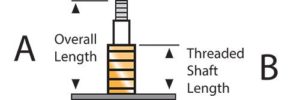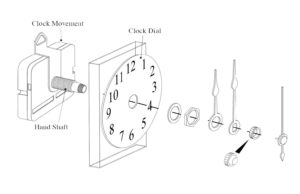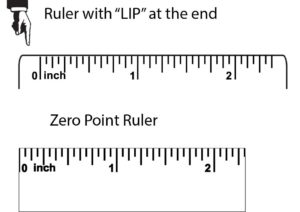The most difficult part of replacing a clock movement for most people, is just measuring the length of the hand shaft. These two measurements are the most important measurements you have to take. You check the overall length of the hand shaft (A) and the length of the threaded part (B), where the hex nut goes. It’s really not difficult to do.


Clock movements are normally attached to a clock dial or other surface from the back side. The thickness of whatever the movement is mounted to will determine the shaft length needed. To check this, you must have the clock movement removed from the clock case. Remove the clock hands and check for a small brass nut that would be under the hour hand and holds the movement in place. Turn it counter clock wise and this should release the clock movement from the clock case. A pair of needle nose pliers usually works well here. Occasionally, you may see a clock movement that is secured from the back with screws, and does not have a brass nut on the clock dial. If this is the case, then removing the screws on the back of the movement should release it from the case.
For example, if your clock has a thin metal dial (1/16” ?) that is mounted to
a ¼” plywood base, then the thickness the hand shaft has to go through is ¼” + 1/16” = 5/16”. It’s usually a good idea the make sure that the threaded part of the shaft is 1/8” longer than the thickness is. This extra 1/8” is used to secure the movement in place with a brass washer and hex nut. This means that we need a minimum threaded shaft length of 7/16” for the 5/16” thick material.


An important thing to remember is that if a hand shaft is too long, it can normally be “shimmed” or “backed up” with a couple of washers over the hand shaft before installation. If the hand shaft is to short, then it simply will not work. So when choosing a movement, a longer shaft than needed you can work with, but to short is very difficult, if not impossible to deal with.
To take these two measurements you will need a good ruler or tape measure. If you are using a ruler, make sure it’s one that does not have a “lip” at the ends. What you need is called a “zero point” ruler. You can find them at any hardware store for a couple of dollars. It’s worth it to be accurate. If you are using a tape measure, then make sure that the clip at the end is tight. If it’s loose, it can make the measure less accurate.


Choosing the right shaft length for your project should not be a difficult task.
For successful clock repair you need to take two measurements, and be accurate. If you can deal with measuring to within 1/16 of an inch, this will be an easy process.
